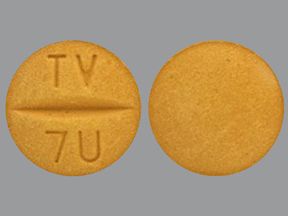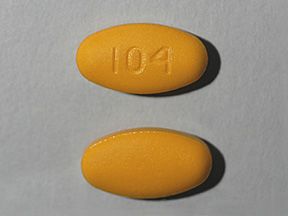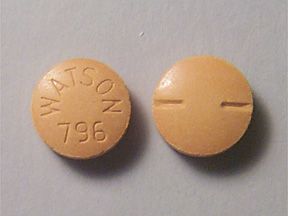Highlights for sulfasalazine
- Sulfasalazine oral tablets are available as both generic drugs and as brand-name drugs. Brand names: Azulfidine, Azulfidine EN-Tabs.
- Sulfasalazine only comes as oral tablets, which come in immediate-release and extended-release forms.
- Sulfasalazine oral tablets are used to treat rheumatoid arthritis, juvenile rheumatoid arthritis, and ulcerative colitis.
Sulfasalazine oral tablet is a prescription drug that’s available as the brand-name drug Azulfidine. It’s also available as a generic drug. Generic drugs usually cost less than the brand-name version. In some cases, they may not be available in all strengths or forms as the brand-name drug.
Why it’s used
Sulfasalazine is used to reduce inflammation and pain in rheumatoid arthritis (RA), juvenile rheumatoid arthritis (JRA), and ulcerative colitis (UC).
In RA and JRA, the medication is used to treat people who haven’t responded to other therapies. It’s used to decrease pain and swelling in the joints.
With UC, the medication is used to treat inflammation in the gut and stomach. It also helps increase the time between your UC flare-ups (attacks). It can be used alone to treat mild-to-moderate pain. It can also be used in combination with other drugs to treat severe UC.
This drug may be used as part of a combination therapy. That means you may need to take it with other drugs.
How it works
Sulfasalazine is an anti-inflammatory drug. It isn’t fully understood how it works. It’s believed that it affects your immune system and decreases inflammation.
Sulfasalazine oral tablet may cause drowsiness. It may also cause other side effects.
More common side effects
The more common side effects that can occur with sulfasalazine include:
- decreased appetite
- headache
- nausea
- vomiting
- stomach upset and pain
- rash
- itching
- decreased sperm count (only while taking the medication)
- dizziness
If these effects are mild, they may go away within a few days or a couple of weeks. If they’re more severe or don’t go away, talk to your doctor or pharmacist.
Serious side effects
Call your doctor right away if you have serious side effects. Call 911 if your symptoms feel life-threatening or if you think you’re having a medical emergency. Serious side effects and their symptoms can include the following:
- Blood disorders or liver damage. Symptoms can include:
- sore throat
- fever
- paleness
- purple spots on your skin
- yellowing of your skin or the whites of your eyes
- Serious skin disorders. Symptoms can include:
- flu-like symptoms
- painful red or purple rash
- blistering
- peeling skin
- Kidney damage. Symptoms can include:
- difficulty urinating, making less urine, or not urinating at all
Disclaimer: Our goal is to provide you with the most relevant and current information. However, because drugs affect each person differently, we cannot guarantee that this information includes all possible side effects. This information is not a substitute for medical advice. Always discuss possible side effects with a healthcare provider who knows your medical history.
Sulfasalazine oral tablet can interact with other medications, vitamins, or herbs you may be taking. An interaction is when a substance changes the way a drug works. This can be harmful or prevent the drug from working well.
To help avoid interactions, your doctor should manage all of your medications carefully. Be sure to tell your doctor about all medications, vitamins, or herbs you’re taking. To find out how this drug might interact with something else you’re taking, talk to your doctor or pharmacist.
Examples of drugs that can cause interactions with sulfasalazine are listed below.
Folic acid
Folic acid (vitamin B-9) is absorbed less by your body when you take sulfasalazine. Your doctor may recommend a folic acid supplement or a higher dose if you’re already taking one.
Heart drug
When you take digoxin while taking sulfasalazine, your body absorbs less digoxin. Your doctor will monitor the amount of digoxin you get and may increase your dosage.
Disease-modifying antirheumatic drug
Taking methotrexate while taking sulfasalazine may increase side effects in your gut and stomach, especially nausea.
Disclaimer: Our goal is to provide you with the most relevant and current information. However, because drugs interact differently in each person, we cannot guarantee that this information includes all possible interactions. This information is not a substitute for medical advice. Always speak with your healthcare provider about possible interactions with all prescription drugs, vitamins, herbs and supplements, and over-the-counter drugs that you are taking.
This dosage information is for sulfasalazine oral tablet. All possible dosages and forms may not be included here. Your dose, form, and how often you take it will depend on:
- your age
- the condition being treated
- the severity of your condition
- other medical conditions you have
- how you react to the first dose
Forms and strengths
Generic: Sulfasalazine
- Form: oral tablet (immediate-release)
- Strength: 500 mg
- Form: oral tablet (extended-release)
- Strength: 500 mg
Brand: Azulfidine
- Form: oral tablet (immediate-release)
- Strength: 500 mg
Brand: Azulfidine EN-Tabs
- Form: oral tablet (extended-release)
- Strength: 500 mg
Dosage for ulcerative colitis
For both immediate-release and extended-release tablets
Adult dosage (ages 18 years and older)
- Typical starting dosage: 3,000–4,000 mg per day taken in evenly divided doses no more than 8 hours apart. In some cases, starting with a dosage of 1,000 to 2,000 mg daily may be recommended to reduce stomach upset.
- Typical maintenance dosage: 2,000 mg per day.
Child dosage (ages 6–17 years)
- Typical starting dosage: 40–60 mg/kg of body weight per day, divided in 3–6 evenly spaced doses.
- Typical maintenance dosage: 30 mg/kg, per day, divided in 4 evenly spaced doses.
Child dosage (ages 0–5 years)
Dosage for people younger than 6 years hasn’t been established.
Dosage for rheumatoid arthritis
Adult dosage (ages 18 years and older)
Extended-release tablets
- Typical starting dosage: 500–1,000 mg per day. This is increased slowly to the maintenance dose. A lower initial dosage may reduce stomach upset.
- Typical maintenance dosage: 2,000 mg per day divided in 2 evenly spaced doses.
Child dosage (ages 0–17 years)
Dosage for children younger than 18 years hasn’t been established.
Dosage for juvenile rheumatoid arthritis
Child dosage (ages 6 years and older)
Extended-release tablets
- Typical starting dosage: One quarter to one third of the maintenance dosage. A lower initial dosage may reduce stomach upset.
- Typical maintenance dosage: 30–50 mg/kg of body weight per day, divided in 2 evenly spaced doses.
Child dosage (ages 0–5 years)
Dosage for children younger than 6 years hasn’t been established.
Disclaimer: Our goal is to provide you with the most relevant and current information. However, because drugs affect each person differently, we cannot guarantee that this list includes all possible dosages. This information is not a substitute for medical advice. Always speak with your doctor or pharmacist about dosages that are right for you.
Sulfasalazine oral tablets are used for long-term treatment. This medication comes with risks if you don’t take it as prescribed by your doctor.
If you stop taking the drug or don’t take it at all: You may experience more flare-ups of your symptoms.
If you miss doses or don’t take it on schedule: The medication may not work as well or may stop working completely. For this drug to work well, a certain amount needs to be in your body at all times.
If you take too much: You could have dangerous levels of the drug in your body. Symptoms of an overdose of this drug can include:
- vomiting
- nausea
- stomach pain
- drowsiness
- seizures
If you think you’ve taken too much of this drug, call your doctor or seek guidance from the American Association of Poison Control Centers at 1-800-222-1222 or through their online tool. But if your symptoms are severe, call 911 or go to the nearest emergency room right away.
What to do if you miss a dose: Take the missed dose as soon as you remember. Skip the missed dose if it’s almost time for your next scheduled dose. Don’t take extra medication to make up the missed dose.
How to tell if the drug is working:
- For RA or JIA: Your joint pain should be reduced, making it easier to perform daily tasks.
- For UC: You should have less stomach pain, and the time between your flare-ups should become longer.
As with all medications, the costs of sulfasalazine can vary.
Keep these considerations in mind if your doctor prescribes sulfasalazine oral tablets for you.
General
- Take this medication with food or shortly after you eat so you don’t get an upset stomach.
- Space your doses of this medication evenly throughout the day.
- Don’t cut or crush the extended-release tablet. Swallow it whole.
- You can cut or crush the immediate-release tablet.
Storage
- Store sulfasalazine at room temperature between 68°F and 77°F (20°C and 25°C).
- Don’t store this medication in moist or damp areas, such as bathrooms.
Refills
A prescription for this medication is refillable. You should not need a new prescription for this medication to be refilled. Your doctor will write the number of refills authorized on your prescription.
Travel
When traveling with your medication:
- Always carry your medication with you. When flying, never put it into a checked bag. Keep it in your carry-on bag.
- Don’t worry about airport X-ray machines. They won’t damage your medication.
- You may need to show airport staff the pharmacy label for your medication. Always carry the original prescription-labeled container with you.
Don’t put this medication in your car’s glove compartment or leave it in the car. Be sure to avoid doing this when the weather is very hot or very cold.
Clinical monitoring
Your doctor may do the following tests regularly during your treatment with this drug:
- Blood tests. Sulfasalazine can decrease some of your blood cell counts, putting you at risk of infection. For the first three months of your treatment with this drug, your doctor will check your blood cell counts frequently. After that, your doctor will check them less often.
- Liver tests. Sulfasalazine can damage your liver.
- Kidney tests. Sulfasalazine is cleared from your body through your kidneys. If your kidneys aren’t working well, they won’t be able to get rid of the drug. This will increase your risk of side effects.
Your diet
This drug may decrease how well your body can absorb folic acid, so you may need to take folic acid supplements. Ask your doctor if this is necessary for you.
Sun sensitivity
You may be more sensitive to the sun while taking sulfasalazine. Apply sunscreen before going outside and wear protective clothing and eyewear. Don’t spend long periods in the sun or near sunlamps. Also, avoid going to tanning salons.
There are other drugs available to treat your condition. Some may be better suited for you than others. Talk to your doctor about other drug options that may work for you.
- Allergies warning: Tell your doctor if you have an allergy to sulfasalazine, sulfa drugs, or salicylates. If you’re allergic to these drugs, you may have a very serious reaction to this medication that could be deadly.
- Infections warning: Sulfasalazine may increase your risk of infections by lowering your body’s immunity. Call your doctor right away if you have signs of an infection, such as a fever, sore throat, or paleness. Your doctor will check your blood regularly for infections.
- Blood disorder or liver damage warning: This drug may cause liver damage or a blood disorder, such as a low number of blood cells that help prevent infection. Symptoms of these problems can include:
- sore throat
- fever
- paleness
- purple spots on your skin
- yellowing of your skin or the whites of your eyes
Sulfasalazine oral tablet comes with several warnings.
Allergy warning
Sulfasalazine can cause a severe allergic reaction, especially to people with a known allergy to sulfonamides (“sulfa” drugs). Symptoms can include:
- trouble breathing
- swelling of your throat or tongue
- hives
If you develop these symptoms, call 911 or go to the nearest emergency room.
Don’t take this drug again if you’ve ever had an allergic reaction to sulfasalazine, sulfonamides, or salicylates such as aspirin. Taking it again could be fatal (cause death).
Warnings for people with certain health conditions
For people with asthma or severe allergies: Tell your doctor if you have asthma. You may be more sensitive to sulfasalazine and have more side effects.
For people with bowel obstructions: Tell your doctor if you have problems with obstruction in your bowel or when urinating. You shouldn’t take sulfasalazine because it could make these problems worse.
For people with porphyria: Tell your doctor if you have porphyria. In this disease, your body doesn’t process certain chemicals (called porphyrins) normally. If you take sulfasalazine, you may have an acute attack or flare-up of porphyria.
Warnings for other groups
For pregnant women: There aren’t enough studies done in pregnant women to show if this drug poses a risk to the fetus. Talk to your doctor if you’re pregnant or plan to become pregnant. Sulfasalazine should only be used during pregnancy if the potential benefit justifies the potential risk to the fetus.
Sulfasalazine decreases the amount of folic acid that your body absorbs. Folic acid is important for an unborn baby’s development. If you take sulfasalazine while you’re pregnant, it’s important that you also take a folic acid supplement. Talk to your doctor about how much folic acid you should be getting each day.
For women who are breastfeeding: Sulfasalazine may be passed through breast milk. This could cause side effects in your child. In a few cases, infants had bloody stools or diarrhea that went away once the mother stopped using sulfasalazine or stopped breastfeeding. If you breastfeed or plan to breastfeed, talk to your doctor about the safety of breastfeeding while taking sulfasalazine.
For children: The safety and effectiveness of this medication haven’t been established in children who are younger than 6 years.
Disclaimer: Healthline has made every effort to make certain that all information is factually correct, comprehensive, and up-to-date. However, this article should not be used as a substitute for the knowledge and expertise of a licensed healthcare professional. You should always consult your doctor or other healthcare professional before taking any medication. The drug information contained herein is subject to change and is not intended to cover all possible uses, directions, precautions, warnings, drug interactions, allergic reactions, or adverse effects. The absence of warnings or other information for a given drug does not indicate that the drug or drug combination is safe, effective, or appropriate for all patients or all specific uses.




